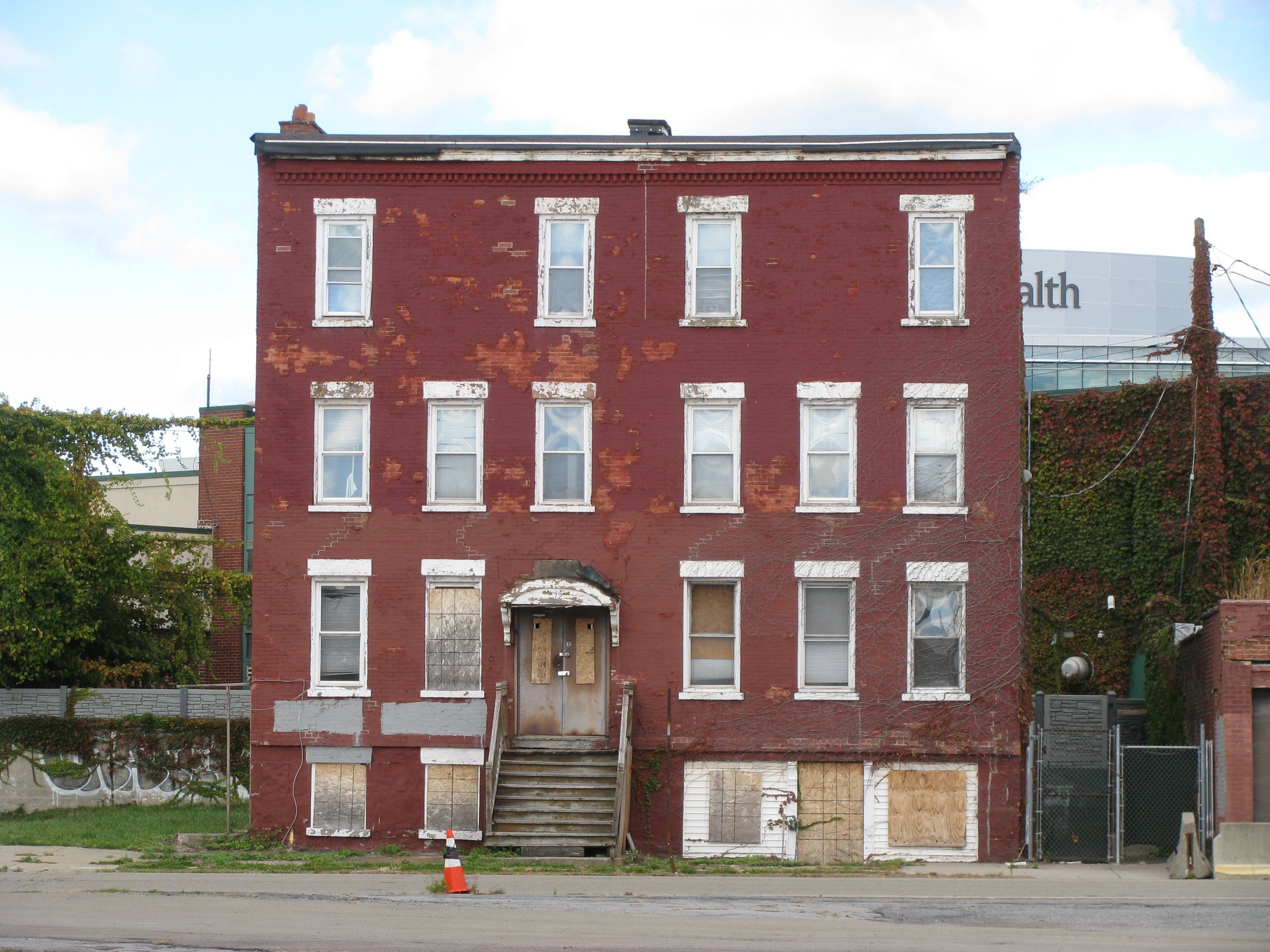The Little Brothel That Could: The Story of 72 Sycamore Street and Eliza Quirk
This guest blog post from Preservation Buffalo Niagara’s Preservation Planner Tabitha O’Connell shines a light on the Eliza Quirk House. PBN is working to restore the historic 1847 rowhouse in downtown Buffalo. In 2020, the League awarded PBN a Technical Assistance Grant to fund a Specialized Conservation Study focused on the building’s exterior brick, and they recently received a $500,000 Environmental Protection Fund grant from NYS to support the necessary rehabilitation work. PBN was also one of the League’s 2021 Excellence in Historic Preservation Award winners and we are excited to share this update from them about “the little brothel that could.”
72 Sycamore Street, October 2020
72 Sycamore Street is an unassuming vernacular building on the East Side of Buffalo, an area that has suffered from disinvestment and widespread demolition of historic structures. Despite being one of the oldest buildings left in downtown, 72 Sycamore might have suffered the same fate had it not been rescued from the wrecking ball in 2017 through a joint effort by Preservation Buffalo Niagara (PBN) and local preservation-based developer Rocco Termini. Now owned by PBN, it is in the process of being rehabilitated into office and workshop space. Through the long journey of locally landmarking the building in 2017 and getting it listed on the National Register in 2021, we have learned so much about the building’s fascinating history, most significantly its original owner, local courtesan Eliza Quirk.
First, some context on the city of Buffalo during Eliza’s era. Thanks to the 1825 completion of the Erie Canal, the mid-nineteenth century was a period of rapid growth and high transience. Over the next 20 years, Buffalo grew from a sleepy frontier town of about 2,400 people to a city more than 10 times that size. Between 1845 and 1850, the period when 72 Sycamore was built, the city added another 12,000 people, bringing its total population to over 42,000. Much of this activity was centered around Buffalo’s harbor and the opportunities presented by trade. Within 15 years of the canal’s opening, Buffalo was the busiest port in America, moving more combined tonnage than Boston, Baltimore, and New Orleans combined. By 1850, nearly 50% of the country’s grain passed through the port of Buffalo, and the addition of steamboat service and rail connections made it one of the largest and most comprehensive ports in the world.
It was during this busy time that Irish immigrant Eliza Quirk lived and worked in Buffalo. Born in Ireland in 1812, she is believed to have arrived in the states around 1830. By 1835, she lived at and ran a recess — an establishment similar to a saloon or tavern — in Buffalo’s red light district, adjacent to the waterfront. In 1845 her building was destroyed by fire, and she received $1,000 in insurance money. It is likely that this payout is what allowed her to purchase the property at 72 Sycamore Street later that year. This move signaled an increase in social status, as she was able to leave the segregated district where sex work and other vices were legally constrained.
These historical photos of other early rowhouses in Buffalo (all since demolished), along with a conjectural drawing of 72 Sycamore by Jennifer Walkowski, give an idea of the building’s original appearance.
By 1848, Eliza had erected the extant building at 72 Sycamore. It was originally two separate townhouses and only two stories, the third having been added after her death. Purpose-built as a boarding house, the west half of the property provided lodging to male boarders, including skilled tradesmen, actors, musicians, and cigar makers, while the eastern was home to Eliza and a collection of young women. Arrest records and newspaper accounts leave little doubt that Ms. Quirk’s home doubled as a house of ill-repute— albeit a rather upscale one, located away from the seamier Buffalo Harbor.
Eliza’s gravestone at the United German & French Cemetery in Cheektowaga, NY.
According to her obituary, Eliza “abandoned her evil ways” around 1860 and joined St. Mary’s Church, although she continued to live at 72 Sycamore until her death from a stroke in 1868. Her obituary goes on to state that “she was known for many generous traits of character and eccentricities, as well as for the bold bad life she led for many years.” After her death, the building continued to be used as a boarding house into the 1980s.
72 Sycamore Street represents an important piece of Buffalo’s history, one that is often overshadowed by the high-style buildings and famous architects that the city is known for. However, Buffalo wouldn’t be Buffalo without the people who built, owned, and made their homes in buildings like 72 Sycamore. Uncovering its story has been one of PBN’s highlights from the last several years, and we look forward to helping write its next chapter.



